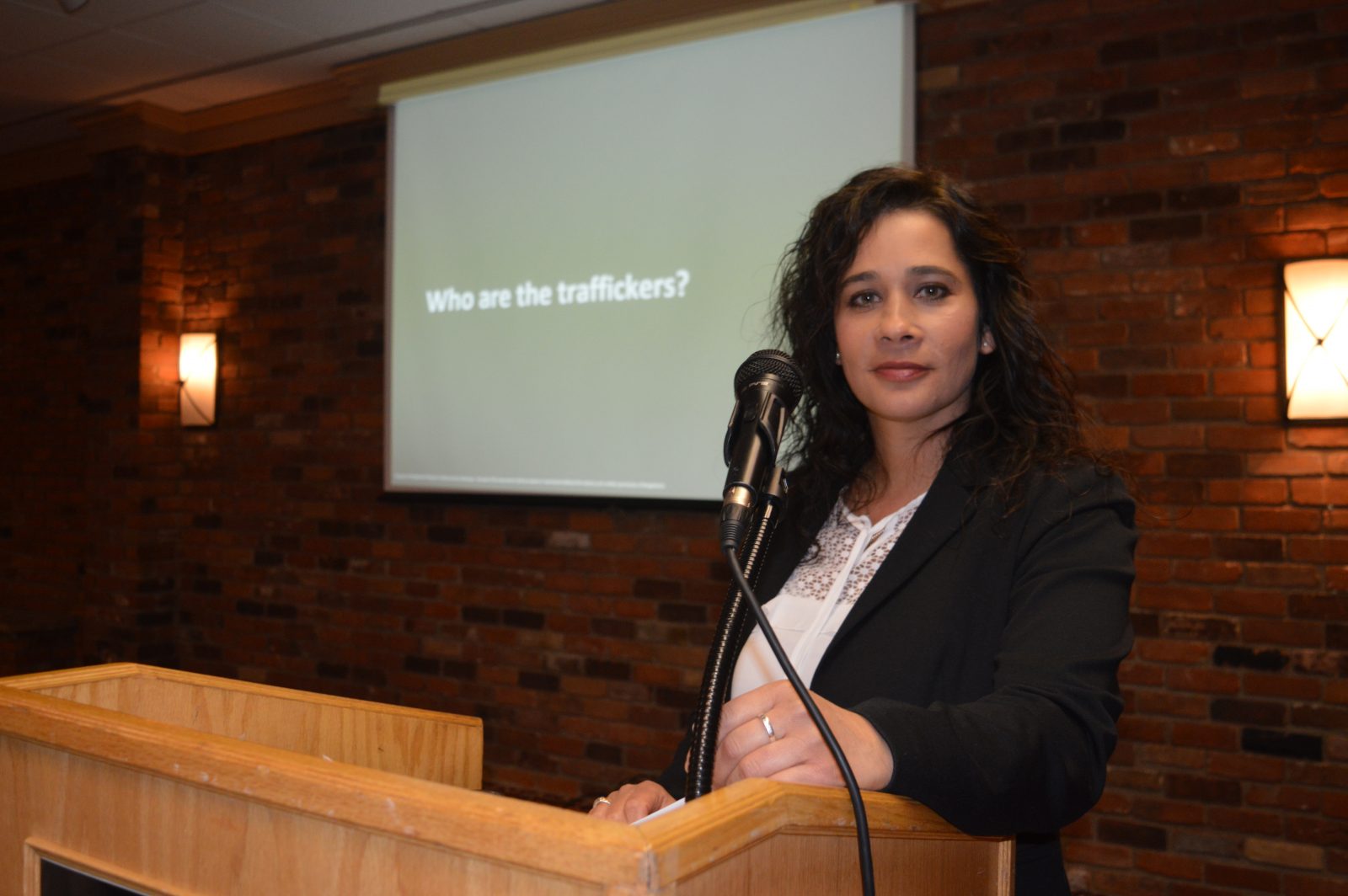CORNWALL, Ontario – Members of the public were invited to learn more about how human trafficking and sexual exploitation influences Canadians at a local and global level on Monday, March 25 and Tuesday, March 26.
Human Trafficking – A Community Response conference, held at Ramada Inn, drew a full audience seeking to learn more about how youth are targeted and how to react proactively on the evening of March 25. Speaker Casandra Diamond, Founder and Executive Director of BridgeNorth, a survivor-lead agency that strives to eliminate sexual exploitation in Canada, spoke about her experience being sexually exploited for 9 years, and shared her accomplishments through BridgeNorth.
“It’s really important for Cornwall to get involved in this because unfortunately it’s really a transit location,” said Diamond. “We are in what is known as the Eastern Circuit. So, young girls, women and some boys are being trafficked up and down and through Cornwall.”
Diamond said that although Cornwall is primarily a transit location, individuals from the area have been trafficked as well. She said that among testimonials of survivors from across the province and other related videos, footage of a girl leaping out of a moving vehicle to get away from her trafficker here in Cornwall was to be shown during the conference.
“You actually have quite a few cities and towns around you that are destinations; that means people are also coming from your community too,” said Diamond.
Diamond shared sobering statistics during her presentation, informing the audience that 99 per cent of human trafficking victims are between the ages of 12 and 22 in Canada and 90 per cent are Canadian citizens. She noted from her work that human trafficking victims are often in vulnerable financial situations and have grown up in average to below average socioeconomic conditions. She noted various trends involved with human trafficking, such as ‘Romeo Pimping’, in which the trafficker reassures the victim and provides them with a false sense of security and protection. She also discussed feelings of shame and judgement from survivors, how many are afraid to tell police or anyone their stories out of guilt.
Diamond also shared various anecdotal case scenarios in which she attempted to intervene in through BridgeNorth. She noted that it is hard to put these cases into tangible figures as there is a massive data collection problem pertaining to the issue across the country.
“I’m not a fan of sharing stats because it is one-sided and not full sided,” said Diamond, referring to statistics on the issue typically coming from the justice system, when cases from different community-based organizations may not be accounted for. “I have people on my current caseload who have been trafficked through Cornwall, but these are anecdotal stories and we need evidence. We need empirical evidence. It’s lacking everywhere.”
Diamond emphasized that individuals are increasingly being lured and groomed into the industry through social media.
“I think the task forces have done an amazing job, getting community involvement and community partners involved in the issue to better care and support people in your community, and anyone coming in who may need help. I want to congratulate and encourage them to continue doing that type of work,” said Diamond.
“Getting the community involved, and having them know how to spot the signs or what to do in a situation (is important)…with the public knowing what human trafficking looks like, innocent bystanders may be able to better intervene in situations,” said Diamond.




